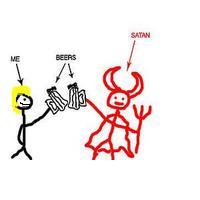Jade figures prominently in this story and I really don't know a lot about it.
First, the Chinese character for jade (that the FBI agent points out in a store as proof of the owner's connection to China) is yu:
According to the book Chinese Calligraphy by Edoardo Fazzioli, the character represents 3 pieces of jade tied together with a string. The dot is a modern development added to distinguish the character from the one that means "king." The character for jade is a radical, meaning it's one of the base characters that form many other combinations.
I know almost nothing about Chinese script so I'm moving on before I really fuck it up to the subject of jade itself. It's actually two different minerals: jadeite ("hard jade") and nephrite ("soft jade") although people didn't realize that until microscopic examination in the 19th century. Jadeite is the rarer of the two so it's naturally more valuable. And the soft/hard designation is accurate but not that meaningful. Jadeite is indeed slightly harder on the Mohs scale. Jadeite appears in a larger number of colors than nephrite. The bright green variety of jadeite, colored by the element chromium, is called imperial jade. Because of the higher value associated with the green color, people have naturally taken to dying jade to simulate the color or passing a mineral like serpentine off as jade (its relative softness is what will give it away.) There is a WikiHow article that gives you the steps to determine whether your jade is the real deal or a rock from someone's backyard slathered in food coloring.
Jade can come in various shades of green mottled with white and in rarer instances yellow, black, pink or white. The Chinese actually valued the white nephrite and it is still valuable. There are 5 classes of Chinese nephrite if you really want to read more, the highest quality being Hetian.
Jade occupies a position in Chinese culture that extends beyond its market value. The Chinese have been using it since Neolithic times (a very hard period to nail down as it varies by region. Dates specific to jade use vary widely between sources so I'm not going to get bogged down in them.) They only had the nephrite variety until jadeite was imported from Burma (still a world source) during the Qing dynasty, 1271-1368. There is more about China's love affair with jade here.
Jadeite was similarly valued by Mesoamerican cultures, starting with the Olmec.
The fabulous BBC4 radio series, A History of the World in 100 Objects, covered the topic of jade multiple times: an axe found in pre-Bronze Age Canterbury, a cup from 15th century Uzbekistan, and a disc inscribed by an 18th century Qing Dynasty emperor.
Finally, although the FBI agent makes a point of mentioning a jade sculpture is extremely valuable because its lack of color shows its age, I cannot find anything (yet) that indicates jade changes color as it ages. In fact, this jeweler's site says the contrary. I know it's a minor detail but it grates my cheese when a book, even a work of fiction, get some fact wrong.


No comments:
Post a Comment